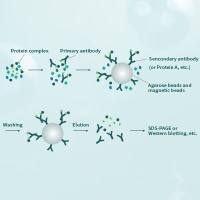蛋白质-蛋白质相互作用图谱能对细胞功能和蛋白组机制提供有用信息。除了在线预测蛋白相互作用外,通过比较具有相对专一性语义关系的的两基因语义注释(Gene Ontology terms, GO)的相似性,可以得到重建酵母蛋白互作网络图谱的新方法。为了验证这种方法的有效性,利用高置信蛋白互作标准数据校正确认。
由此种方法预测重建的蛋白互作网络含40753种互作关系,2259种蛋白质参与,并形成了16个互相链接的主节点。除了同型二聚体(homodimers),所有的MIPS复合体均被成功整合到预测网络中。其中,约35%的复合体鉴定表现为互相连接,另外7中蛋白复合体可能和上述复合体功能相关。
因此,这种分析方法为以高置信GO为基础的注释方法完全测序的基因组提供新的蛋白质-蛋白质互相作用图谱。
文献阅读:
Prediction of yeast protein–protein interaction network: insights from the Gene Ontology and annotations
Xiaomei Wu, Lei Zhu, Jie Guo, Da-Yong Zhang and Kui Liundefined
MOE Key Laboratory for Biodiversity Science and Ecological Engineering and College of Life Sciences, Beijing Normal University Beijing 100875, China
Nucleic Acids Research 2006 34(7):2137-2150; doi:10.1093/nar/gkl219
A map of protein–protein interactions provides valuable insight into the cellular function and machinery of a proteome. By measuring the similarity between two Gene Ontology (GO) terms with a relative specificity semantic relation, here, we proposed a new method of reconstructing a yeast protein–protein interaction map that is solely based on the GO annotations. The method was validated using high-quality interaction datasets for its effectiveness. Based on a Z-score analysis, a positive dataset and a negative dataset for protein–protein interactions were derived. Moreover, a gold standard positive (GSP) dataset with the highest level of confidence that covered 78% of the high-quality interaction dataset and a gold standard negative (GSN) dataset with the lowest level of confidence were derived. In addition, we assessed four high-throughput experimental interaction datasets using the positives and the negatives as well as GSPs and GSNs. Our predicted network reconstructed from GSPs consists of 40 753 interactions among 2259 proteins, and forms 16 connected components. We mapped all of the MIPS complexes except for homodimers onto the predicted network. As a result, 35% of complexes were identified interconnected. For seven complexes, we also identified some nonmember proteins that may be functionally related to the complexes concerned. This analysis is expected to provide a new approach for predicting the protein–protein interaction maps from other completely sequenced genomes with high-quality GO-based annotations.
![]()







